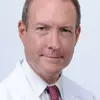This is the second of a two-part article on the critical characteristics of high-performing cardiology programs and service lines. Find the first part here.
High-performing cardiology programs—those that live up to their mission and goals—share a number of characteristics that set them up for success and enable them to continue accelerating their efforts over time. The first installment of this two-part feature, available here, focused on the critical attributes that stem directly from the organization’s Board and C-suite. We explored characteristics that almost always need to start from the top: strategic planning, leadership engagement, administrative support, compensation-strategy alignment and commitments to both value and research. Now, we turn to the critical characteristics associated with how top-level physicians and administrators perform their work.
While the Board and C-suite set the organization’s vision and create an environment where the management team understands its goals and embraces its responsibilities, top-level managers set the tone for the organization. Here’s how:
Prioritize leadership
1. Leadership everywhere
High-performing systems have leadership throughout the organization. Leaders are approachable and sincere. They genuinely want to learn about issues their colleagues are facing and get invested in addressing those issues. They are frequently seen on the hospital floors, and their presence is welcomed. They actively engage with all of the people who are carrying out the health system’s mission and goals, not only those they work with directly.
Such leaders recognize the importance of effective management. They understand their responsibility for the organization’s financial growth and stability, for patient outcomes and satisfaction and for overseeing the refinement of processes when necessary.
2. Leadership is earned & supported
Top-performing programs do not designate their leaders by default, and their leaders do not work in isolation. Physician leaders must have the ability to fulfill a clearly defined job description, be willing to devote the necessary time, be passionate about the program’s success and possess the skills necessary to earn support from the administration and their colleagues. Administrators support and validate the roles with appropriate compensation and opportunities to receive leadership training.
3. Engage with all stakeholders
In the best health systems, the cardiologists—especially those in leadership positions—are involved in all aspects of cardiovascular care. This includes what care, by whom, where and when.
High-performing systems also engage their cardiovascular physicians in every aspect of the program, including (but not limited to) resource utilization, quality improvement, financial performance, contribution margin and program expansion. These programs seek their physicians’ input on key decisions, including hiring and retention of key personnel, and they actively cultivate transparency. Such transparency requires a high degree of mutual trust and insightful leadership, which can be difficult. It is, however, absolutely essential for the development of jointly developed, mutually agreed-upon goals, including how they will be measured and how stakeholders will be compensated for outcomes. Without such engagement, the system is unlikely to achieve its full potential and will be at risk for ineffectiveness and failure.
4. Dyad or triad model
Effective cardiology programs and service lines embrace the dyad leadership model, where a physician and an administrator work side by side. In fact, some systems have moved to triad leadership that also includes a nurse leader. Productive dyad/triad teams have complementary skillsets, learn from one another’s strengths and weaknesses, and leverage their differences to enhance outcomes. High-functioning dyads and triads seize opportunities to learn together, particularly at meetings focused on emerging reimbursement and regulatory developments and seminars designed to help them work more effectively in their roles.
5. ‘Top of license’ across the board
High-performing cardiology programs and service line leaders ensure that all of their clinicians have clearly delineated roles and are working at the top of their licenses as much as possible. This philosophy applies to physician specialists, who should spend the majority of their work hours performing tasks reflective of their specialty training, and to advanced practice providers (APPs), who should not be performing nursing or clerical functions. Committing to this approach goes a long way toward ensuring job satisfaction and practice efficiency, and it can enhance patient satisfaction.
Create a culture to succeed
Culture can best be defined as the values and behaviors that form an entity’s unique social and psychological environment. Put simply, “It’s what we do, and everyone knows it.” Successful cardiology programs take the time to develop, nurture and focus on their culture.
A key aspect of culture at the best-performing cardiology programs is recognition that their people are their greatest asset. The cardiologists feel valued by the administration, and the administrators view their cardiologists as a treasured resource. The physicians understand the enterprise’s daily operations, they put the program’s success ahead of their own individual successes and they embrace the idea that they are the best because they work together. Here’s how they do it:
6. Communication is key
Clear communication is the lynchpin of all successful programs. All of the stakeholders have an opportunity to voice their opinions before critical decisions are finalized. This cultivates a culture of mutual respect, trust and understanding that helps to ensure that everyone moves in the same direction—the one laid out in the strategic plan. In this environment, physicians feel they are heard, their concerns are taken seriously and their participation in decision making is valued, not pro forma or perfunctory, even when they don’t agree with specific decisions. They respect that few decisions are unanimous and will adhere to and defend all final decisions—even those they didn’t support initially.
7. External & internal transparency
High-performing programs share their successes and shortcomings, often in an open forum that allows everyone to explore deficiencies and learn from them. This might include participating at national conferences, where physicians and administrators share their efforts—both successes and failures. Such transparency can inspire changes needed to correct or improve limitations.
In house, leaders constantly work to review and improve results and present their efforts to anyone who is interested, often in forums open to the general public, such as on the practice’s website. This level of transparency often pushes the system to identify improvement opportunities, develop consensus on a plan, implement it and monitor the results.
Internal transparency also lets physicians in on the finances—not only the prices of individual items but also the costs and benefits of protocols. The physicians know, for example, how various practice patterns affect lengths of stay, hospitalization costs and bed utilization as well as how such variables impact other hospitals or the emergency department. Knowing these things allows for continuous improvement and celebration of achievements. To facilitate such understanding, physician leaders should be engaged in the budget process, which will help them see how they can influence contribution margins and potentially help their institutions negotiate more favorable contracts with vendors.
8. Proactive, not reactive
Top programs see problems coming and have an infrastructure in place for heading off problems or minimizing their impact. They aren’t caught off guard by crises and then forced to figure out what to do. In other words, they create a culture that allows them to be proactive, not reactive. Their strategic plan, as discussed in the first part of this series, enables them to set a course and stick to it, rather than being lured off course or trying to reinvent themselves.
9. Expectations & accountability
In high-performing programs, everyone is held accountable for the results of their efforts. For both physicians and administrators, accountability is reflected in their compensation and their job performance evaluations. Exemplary performance is expected, and shortfall is addressed in a timely and effective manner.
Many systems have a formal process for reviewing the quality of their physicians’ work. Issues are identified by set parameters and third parties as well as through random case reviews within a structured and ongoing peer-review process. High-performing service lines and programs incentivize this approach. Administrators also are subject to regular performance reviews to ensure they are meeting designated targets. Individuals who consistently underperform are replaced when necessary. In these situations, physicians may resume their clinical work but are relieved of leadership roles.
10. Celebrate successes while striving to continue improving
The most successful systems recognize the importance of celebrating achievements and recognizing outstanding work; however, they never stop improving. They realize that, even if they have been named “the best,” they can become even better. They don’t believe their own press. They work together as a team to identify new concerns and address them.
11. Focus on quality, not compliance
Highly effective cardiology programs prioritize stellar quality, not just compliance. They recognize that passing inspections by certifying agencies, such as the Joint Commission, is necessary, but that these requirements are just the floor for quality. They aim for the ceiling. Their quality departments are proactive in identifying areas for improvement in patient satisfaction, care processes and resource utilization that go far beyond those evaluated by outside agencies.
In conclusion
For cardiology programs and service lines to evolve and thrive, there must be a commitment from the Board, C-suite, and both the physician and administrator leaders throughout the organization. They must work together to develop the trust and respect that support an environment that is transparent, openly communicative, accountable and modest. These efforts will benefit them, their system and most importantly, their patients.
Peter L. Duffy, MD, MMM, is an interventional cardiologist in North Carolina. He has served as medical director of the CVSL at Reid Heart Center/FirstHealth of the Carolinas and currently is chair of the Society for Cardiovascular Angiography and Interventions Cath Lab Survey Committee and a member of the American College of Cardiology Interventional Council and National Cardiovascular Data Registry Management Board.

